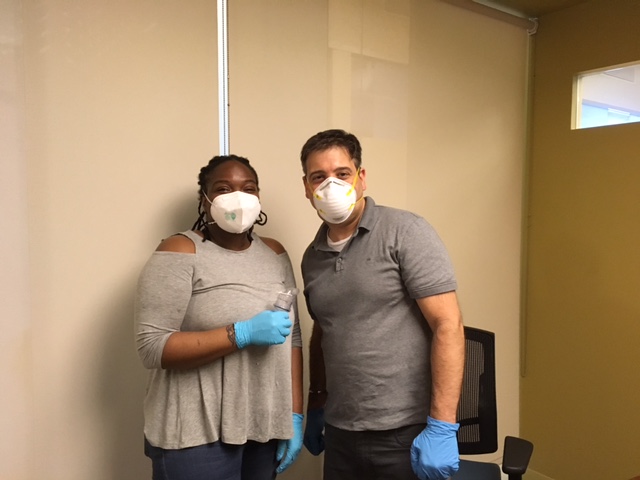Blog

COVID-19 Response: How Do You Fit N95 Masks to Keep Medical Providers and Essential Workers Safe?
June 24, 2020When the COVID-19 outbreak hit New York, our top priority at CUCS was the safety of our staff and the individuals in our care. As protective masks became hard to obtain, we worked tirelessly to procure donated face masks, and we even began 3D-printing respirator masks for our team.
But obtaining masks is only one part of the equation. Using this protective equipment comes with its own set of needs and expertise.
N95 respirator masks are considered to be one of the most effective types of facial protective equipment. According to the FDA, this type of mask “blocks at least 95 percent of very small (0.3 micron) test particles” when properly fitted.
For an inside look at what it takes to achieve this proper fit, we talked with Justina Thomas, Medical Assistant with Janian Medical Care, who has been fitting the N95 masks for our team.
Why is it important to fit N95 masks?
N95 masks come in different sizes and are manufactured by many different companies. Simply wearing an N95 mask is not enough. You have to make sure you have the snug fit and seal around your nose and face. Fit testing ensures a snug fit that facilitates proper protection against harmful contaminants in the air.
Most people believe that just because they wear an N95 mask, they will be protected. Without fit testing an N95, you will still potentially be subject to exposure.
How long does it take to do one of these fittings?
It takes about 15 minutes per test.
What is the fit test process like?
While wearing a seal-checked N95 mask and being placed under an exposure hood, participants are asked to perform various activities. As they are going through the motions, a mist of a Saccharine irritant spray is released inside of the hood. If at any point during the test the participant smells or tastes the irritant, the test is considered a fail. We then test another seal-checked N95 mask until we find one where a smell or taste is not detected. That is called a “proper fit.”
What about this process has changed since the COVID-19 crisis?
I’m fairly new to performing fit tests. At the start of the COVID-19 outbreak, I was taught by our Deputy Director of Primary Care Operations, Carol Eisenberg, who primarily does all of our testing. What I have learned is that due to the N95 mask shortage, OSHA issued a temporary enforcement guidance that healthcare providers change from quantitative fit test to qualitative fit tests (the one that I learned) to preserve the integrity of the mask. During quantitative fit tests, masks are often damaged, but during qualitative fit tests, masks can be reused.
What makes you proud to do this work?
With all the devastation going on because of COVID-19, sometimes I feel a little helpless. Doing this allows me to do my very small part to be of service to my coworkers who are on the front lines.
You can help us keep our front-line workers safe by donating to the CUCS COVID Relief Fund.
